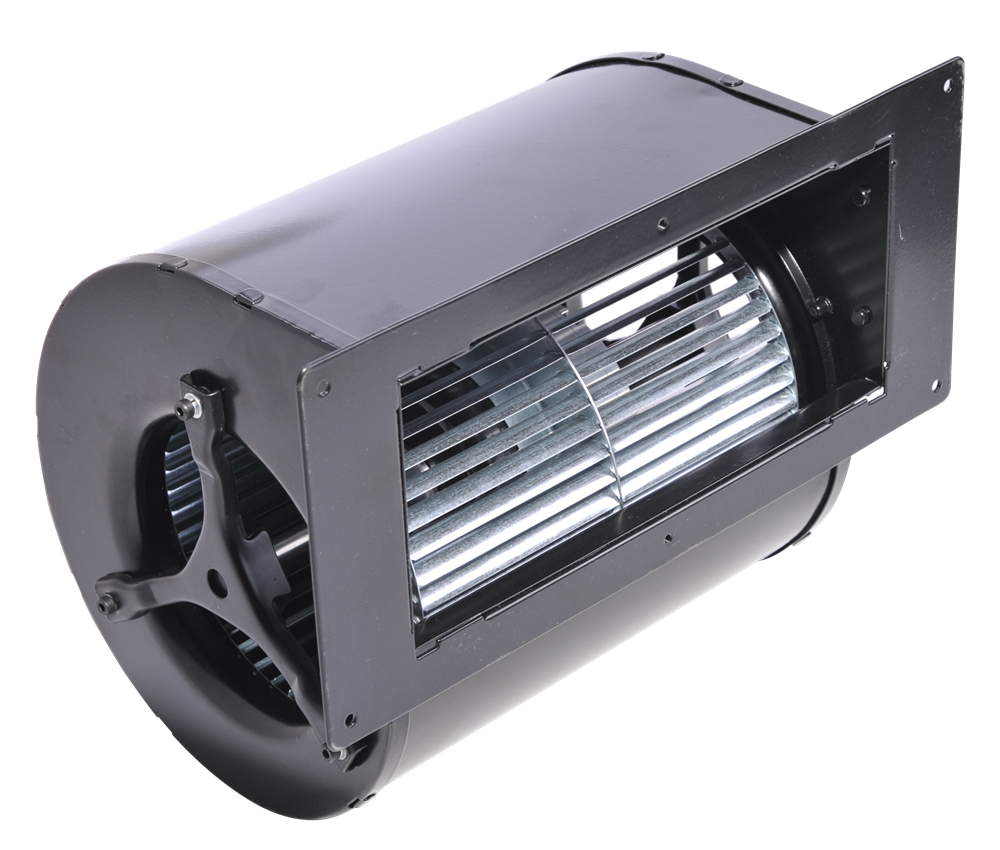What is The Difference Between Axial VS Centrifugal Fan

What is The Difference Between Axial VS Centrifugal Fan
Axial and centrifugal fans are both popular types of fans and they are used to move air in a variety of contexts. While they share the same core purpose, they operate quite differently. Axial fans use blades that are positioned parallel to the shaft that is connected to the motor and blow air straight ahead. This helps increase the pressure of the moving air but typically is not as effective at moving air over long distances as centrifugal fans, which use curved blades on a rotating hub that forces air outwards creating suction and pulling surrounding air along with it. In terms of operation, axial fans tend to be quieter than their centrifugal counterparts but offer less static pressure.
What are their advantages axial and centrifugal fans
Axial and centrifugal fans have a variety of advantages, making them an ideal choice for many applications. Axial fans work by creating a pressure difference between their inlet and outlet, while centrifugal fans use centrifugal force to move the air. Axial fans are typically less expensive than their centrifugal counterparts but create less static pressure, whereas centrifugal fans can generate stronger pressure though at a higher cost.
In addition to being more affordable, axial fans tend to be quieter since they produce less noise than centrifugal models. This makes them effective for home or office use where quiet operation is important. Centrifugal fans, on the other hand, are often used in commercial and industrial environments where high-pressure air movement is required. Ultimately, both axial and centrifugal fans offer different benefits and choosing the best one depends on understanding one's needs and requirements.
Axial fans and centrifugal fans both offer advantages in a variety of applications. Axial fans use blades that are connected to a shaft and can move large volumes of air at low pressures, making them ideal for forced cooling systems or exhausts. On the other hand, centrifugal fans move air in an outward motion, which makes them well-suited for high pressure charging air into furnaces or drying equipment.
While axial fans provide more properties like their compact size and high efficiency, centrifugal fans are known for their ability to create greater volumes of airflow with large diameters and increasing static pressure capabilities. Depending on the application type, one of these fan types might be the optimal choice for providing certain benefits to its user.
Characteristics of axial and centrifugal fans
1.Axial and centrifugal fans are two different types of air movement machines commonly used in various applications. Axial fans use a propeller to move air in one direction, while centrifugal models utilize an impeller that spins as it pushes air in a radial direction.
2.When deciding which type of fan to use, it is important to consider the size and power requirements, as well as the desired rate of airflow and pressure. In general, axial fans are suitable for smaller applications where low noise levels are preferred, while centrifugal models are better suited for high volume output projects that require increased velocity or pressure.
3.Axial and centrifugal fans each have their own unique characteristics, making them ideal for different applications around the home or in commercial applications. Axial fans are known for their low noise output, making them commonly used in residential settings.
4.Centrifugal fans produce a tremendous amount of power and can generate high amounts of pressure, suitable for industrial applications. Furthermore, centrifugal fans move air more efficiently than axial fans, proving to be particularly advantageous when working with tight spaces. Both types of fans offer plenty of versatility to fit any ventilation system needs, whether it's cooling a room or providing extra airflow.
Maintenance method of axial and centrifugal fans
Maintenance of axial and centrifugal fans should be a regular part of any industrial facility's upkeep plan. By regularly inspecting these fans, you can ensure that they operate at optimum efficiency and don't create disruptions in production when something breaks down.
Common maintenance tasks for both fan types include checking for dust, dirt, and other debris buildup; ensuring all bearings turn properly; detecting if fan blades are unbalanced or misaligned; and checking pulleys to make sure they are aligned and secure. In addition to regularly scheduled service checkups, you should pay close attention to the way your axial or centrifugal fan operates. The most timely response will prevent potential downtime and costly repairs down the road.
There are a few key steps that should be regularly carried out, including cleaning filters and removing dirt or debris from blades; checking the fan's balance, especially in the case of centrifugal fans; inspecting the fan operation regularly to ensure it runs smoothly; visually examining casings for cracks; and lubricating all motor bearings before putting them back into service. Taking these simple yet crucial steps will help make sure these types of fans are at peak performance and reliable for years to come.
About China Centrifugal Fan manufacturer
AFL was created by a group of like-minded industry veteran, mainly manufacturing DC&AC external rotor centrifugal fan and axial fans, DC internal rotor motor and fans. Products passed 3C、CE、ETL、ROHS certifications. AFL was found in 2014 with registered capital 27.79 million yuan. AFL covers an area of 20,000 square meters for production. We have 190 employees and the annual production capacity is about 1 million unit. AFL's export proportion is about 30%, mainly exported to the European market.
-
What are the characteristics of Professional axial fan manufacturer
2022-03-11
-
Detailed explanation of axial flow fan
2022-03-02
-
Blower Fan Overview and Applications
2022-02-25



